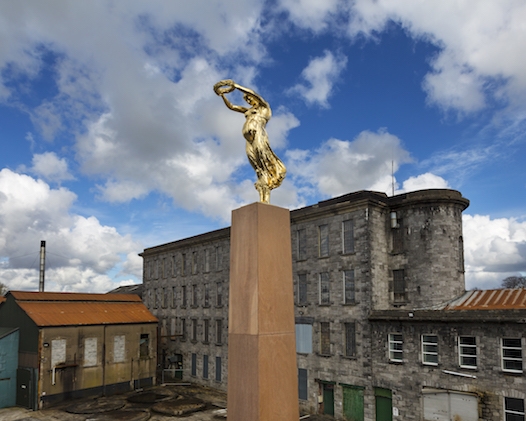While aggressively constructing the image of an outward-looking nation, above all in an economic sense, Ireland remains much less motivated by the wellbeing of its women. The constitution’s dehumanising Eighth Amendment, introduced in 1983 to grant a foetus equal rights to its mother, has meant thousands of women have been forced to travel to other, more humane jurisdictions to access abortion. Some, like Savita Halappanavar, have died, denied lifesaving terminations because of the country’s now largely tokenistic Catholicism. As I write, we are about to vote in a referendum that would repeal the amendment; but I am yet to meet anyone sufficiently foolhardy to assume it will pass.
The question of statehood is one important strand to the 38th edition of EVA International, which takes place in the small western city of Limerick. With Colombia-born curator and critic Inti Guerrero at the helm, this iteration – without subtitle, so as to emphasise its International-ism – features 56 artists and collectives over five contrasting venues; a further satellite exhibition, at the Irish Museum of Modern Art, bolsters the biennial from Dublin. EVA’s lodestar, kicking off the biennial at the Limerick City Gallery, is an allegorical painting by Seán Keating, Night’s Candles Are Burnt Out (1928–29), depicting construction of the nearby Ardnacrusha hydroelectric dam, and with it Ireland’s conflicted embrace of modernity; this then sets off a much wider, and at times unwieldy conversation about power, dams, colonialism and – as with the Eighth Amendment – how these state decisions invariably play out on the level of individuals.
The strongest work on show in Limerick takes place at the two largest venues, the LCG and the vacant condensed-milk factory, Cleeve’s, on the northern shore of the river; two of the smaller venues, the Limerick Clothing Factory and 6 Pery Square, are dark and grotty, possibly chosen by necessity rather than suitability for contemporary art exhibitions. At LCG, a pair of biting expressionist oil paintings by Rita Duffy, Siege I (1989) and Siege II (1990), alongside John Duncan’s photographs of Unionist bonfires, temporary monuments to resilient intransigence (Bonfires, 2008), act to highlight the fragile peace of Northern Ireland and, as Brexit looms, to call for the imperfect but still preferable status quo. Elsewhere a small, miraculous painting by the late Egyptian artist Inji Efflatoun, les diablesrouges (1964), details the construction of the Aswan High Dam as a sea of blood, siphoned from the collective body of its citizens. Here, the relationship between state power and its people is porous and metabolic; in Nigerian artist Uchechukwu James-Iroha’s startling series of black-and-white photographic portraits, likewise, citizens are physically plugged in, tangled up in skeins of electrical wiring or chained to generators. Like Irish women at the present time, here the person is valuable only insofar as they reproduce, in a measurable, economic sense.
EVA is at its strongest at Cleeve’s. Asserting the venue’s centrality, Sanja Iveković’s figurative sculpture of a pregnant Nike, Lady Rosa of Luxembourg (2001), rises up from its central yard to puncture the city’s modest skyline, carving up the traditional masculinity of public space for a revolutionary, irrefutable womanhood. In contrast to the other venues, all of the artists here have been allotted vast amounts of space, with particularly strong works by Irish artists Isabel Nolan, John Gerrard, Adrian Duncan and Fergal Ward. Banners made by the Artists’ Campaign to Repeal the Eighth Amendment – well-worn from recent protest marches, as well as the funereal procession through Limerick’s streets on the biennial’s opening day – are shown alongside video testimony from people directly affected by the amendment. The inclusion of this necessary activist work means the exhibition is brought firmly back to the stark question now being put to contemporary Ireland. And, while more diffuse treatments of internationalism and power recur over the course of the exhibition, it is via this local context that Guerrero’s EVA International is most coherent and urgent.
EVA International, Limerick City, 14 April – 8 July
From the Summer 2018 issue of ArtReview
